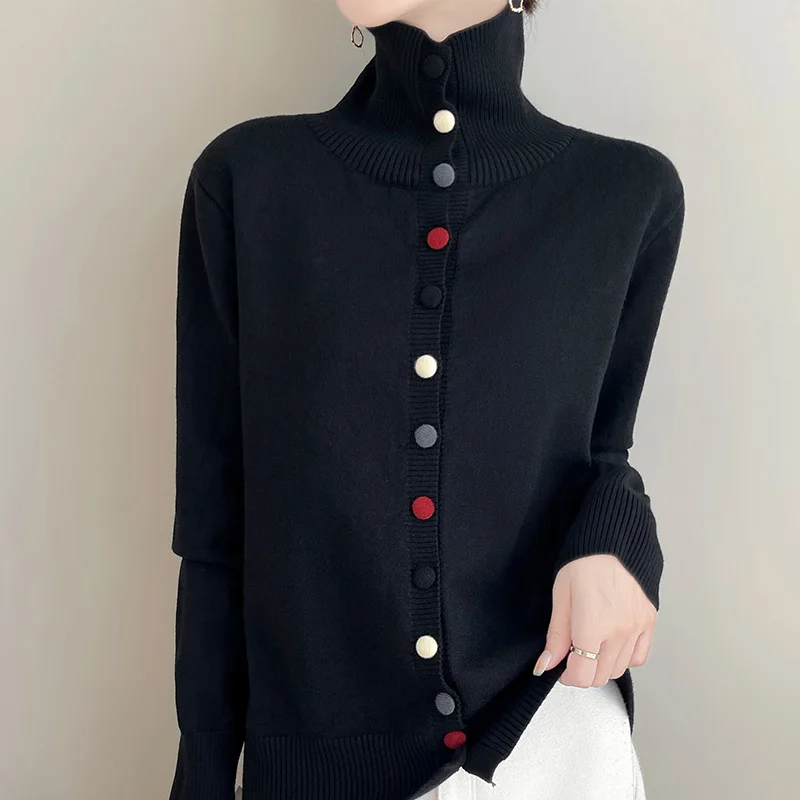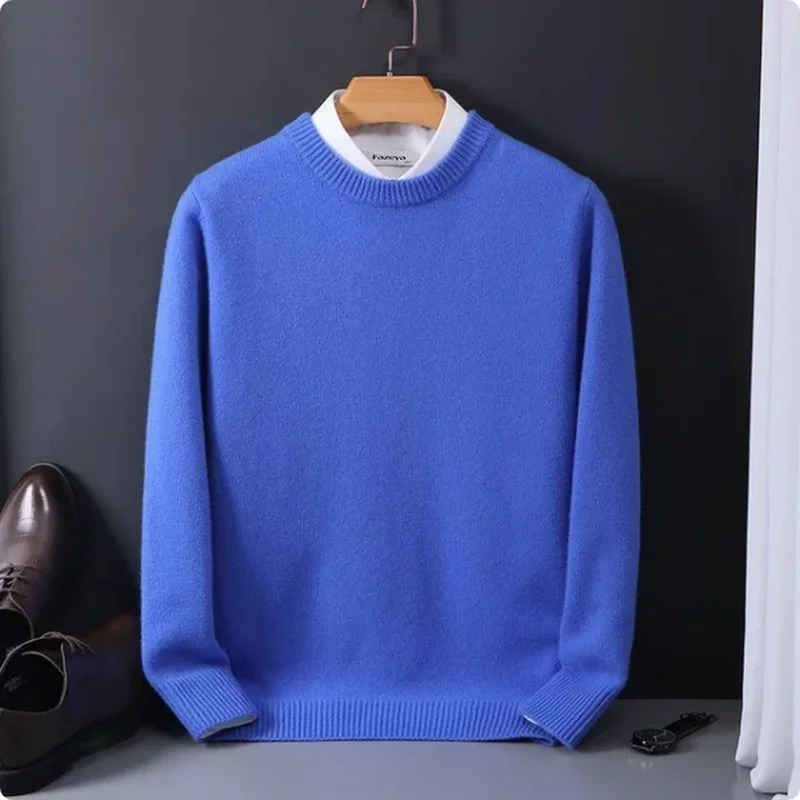Understanding the True Touch of Luxury Cashmere
Cashmere has earned its reputation as one of the world’s most luxurious fibers primarily because of how it feels against the skin. While beautiful to look at, the true value of cashmere is best discovered through touch. This tactile experience is what separates exceptional cashmere from merely adequate alternatives.
Reading labels and trusting brand names can only tell you so much about the quality of cashmere you’re considering. Many manufacturers make impressive claims about their products, but your own hands can reveal truths that marketing cannot hide. Learning to evaluate cashmere through touch empowers you to make informed purchases based on actual quality rather than persuasive packaging.
What makes this tactile assessment so critical is that many lower-quality cashmere products undergo chemical treatments designed to mimic the feel of premium fibers. These treatments might create an initially pleasing sensation but often mask inferior materials that will quickly degrade with wear. Only by understanding what genuine quality feels like can you confidently identify these deceptive practices.
The difference between true luxury cashmere and lower-quality alternatives becomes immediately apparent when you know what to feel for. Experienced buyers and industry experts rely primarily on their sense of touch when evaluating cashmere, applying practical knowledge that goes beyond what any label can communicate. Developing your own styling tips for cashmere cardigans becomes much easier when you can confidently identify quality pieces worth investing in.
When selecting your next luxury piece, exploring collections of cashmere sweaters with an educated touch will significantly improve your purchasing decisions.
The Science Behind Cashmere’s Feel: What Determines Quality
The distinctive feel of cashmere isn’t magical—it’s scientific. Several measurable factors combine to create that unmistakable sensation when you touch high-quality cashmere. Understanding these elements helps you recognize genuine quality through your fingertips, regardless of what the price tag or label might suggest.
Four primary factors determine how cashmere feels: fiber length, fiber diameter (micron count), ply construction, and knit density. Each contributes uniquely to the overall sensory experience, and they work together to create cashmere’s signature feel. These characteristics don’t exist in isolation—they interact to create the complete tactile profile that makes cashmere so desirable.
The quality of cashmere can vary significantly based on geographic origin, with certain regions producing fibers with distinct natural properties. Learning to recognize these differences enhances your ability to evaluate cashmere quality through touch. The relationship between premium cashmere and its geographic origins shows how location affects the tactile qualities of the finished product.
Fiber Length: The Key to Smoothness and Durability
Fiber length (also called staple length) is perhaps the most important factor determining cashmere quality. Longer fibers create smoother, more durable fabric that resists pilling and maintains its luxurious feel over time. Premium cashmere typically features fibers measuring 36mm (1.4 inches) or longer, allowing them to be spun into strong, smooth yarns.
In contrast, shorter fibers (under 28mm or 1.1 inches) create rougher fabric that pills easily and quickly loses its shape. These shorter fibers can’t be twisted together as effectively during spinning, resulting in yarns that break down with wear. You can detect fiber length through touch by:
- Smoothness across the surface (longer fibers create a more consistent feel)
- Minimal initial pilling when gently rubbed
- Resilience when lightly stretched
- Absence of loose fibers shedding from the surface
The difference between long and short fiber cashmere becomes increasingly apparent with wear, as lower-quality options quickly develop pills and rough patches while premium pieces maintain their original feel.
Micron Count: The Measure of Softness
Micron count refers to the diameter of individual cashmere fibers, measured in microns (a micron equals one-millionth of a meter). This measurement directly determines how soft cashmere feels against your skin—the lower the micron count, the finer and softer the fiber.
Cashmere is typically categorized into three grades based on micron count:
| Grade | Micron Count | Feel Characteristics |
|---|---|---|
| Grade A | Under 16 microns | Exceptionally soft, no scratchiness |
| Grade B | 16-19 microns | Soft with slight coarseness |
| Grade C | 19+ microns | Noticeably coarser feel |
The micron count impacts how cashmere feels against sensitive skin. Grade A cashmere with fibers under 16 microns creates that luxuriously soft sensation without any hint of irritation. As the micron count increases, you’ll detect increasing levels of coarseness or slight “tickling” against the skin.
For those seeking the absolute softest options, brushed cashmere sweaters offer enhanced softness through a specialized finishing process that works best with already fine fibers.
Ply Construction: Impact on Substance and Warmth
Ply refers to how many strands of yarn are twisted together to create the final thread used in knitting cashmere garments. This construction method significantly affects how substantial the fabric feels in your hand and how it performs in different conditions.
Different ply constructions create distinct tactile experiences:
Single-ply: Lighter weight with a softer drape, but less substantial feel. Single-ply cashmere often feels more delicate and is more prone to pilling.
2-ply: The standard for quality garments, offering balanced weight, durability, and softness. Two-ply construction provides a more substantial feel while maintaining excellent drape.
4-ply and higher: Premium weight with exceptional substance and warmth. These constructions create a distinctly rich hand-feel with impressive insulation properties.
The ply construction directly impacts how cashmere responds to the stretch and recovery test—higher ply cashmere typically returns to shape more effectively due to the reinforcement of multiple yarn strands. Understanding choosing the right cashmere ply for your specific needs can help you find pieces with the precise feel you prefer.
Knit Density: Structure You Can Feel
Knit density (or gauge) describes how tightly the yarn is knitted together. This factor significantly affects how cashmere feels in your hand, its durability, and its insulating properties. The density of the knit creates a distinctive tactile signature that quality-conscious buyers learn to recognize.
Different knit densities produce distinctly different feels:
Higher gauge (fine knit): Creates a smoother surface with a more refined appearance. These knits feel thinner between your fingers but often have excellent drape and are generally dressier.
Lower gauge (chunky knit): Produces more textural interest and a casual appearance. These knits feel more substantial and often provide greater warmth.

You can assess knit density visually and tactually by checking how much light passes through the fabric when held up to a light source. Quality cashmere features consistent knitting with even density throughout the garment. Inconsistent density often indicates manufacturing shortcuts.
Chemical Treatments: Beware the Artificially Soft Touch
Some manufacturers use chemical softeners to make lower-quality cashmere feel temporarily luxurious. This deceptive practice creates an unnaturally soft initial impression that quickly fades with wearing and washing. Learning to recognize this artificially enhanced feel is crucial for making smart cashmere investments.
Chemically treated cashmere often has a distinctive “too soft” quality that feels almost slippery or synthetic rather than natural. While genuine cashmere has a soft yet slightly dry hand-feel with natural resilience, chemically treated pieces feel unnaturally slick. This artificial softness typically disappears after the first washing, revealing the true, often disappointing quality beneath.
The consequences of these treatments extend beyond deception—they actually damage the cashmere fibers, compromising their natural properties and significantly reducing garment lifespan. After washing, chemically treated cashmere often becomes rough, misshapen, or develops excessive pilling, none of which occurs with naturally processed quality fibers.
For more comprehensive understanding of what distinguishes superior products, exploring guides about how to choose high quality cashmere provides valuable context beyond just tactile assessment.
How to Evaluate Cashmere Quality Using Your Hands
Armed with knowledge about what creates cashmere’s distinctive feel, you can develop a systematic approach to tactile evaluation. These straightforward techniques require no special equipment—just your hands and attention to sensory details. These practical tests can be performed whether you’re shopping in person at a boutique or evaluating a newly delivered online purchase.
Combining multiple evaluation methods provides the most reliable assessment. While a single test might give you partial information, a complete examination using all the techniques below creates a comprehensive quality profile. Think of it as gathering evidence—the more points of confirmation you have, the more confident you can be in your evaluation.
These practical tests aren’t just consumer tricks—they’re adapted from techniques used by industry professionals who select cashmere for manufacturing. Understanding the authentic cashmere tactile guide can help you develop a more nuanced appreciation for quality indicators.
The Gentle Touch Test: Assessing Fundamental Softness
The gentle touch test is your first and most basic quality assessment tool. This test evaluates the fundamental softness and comfort of the cashmere against sensitive skin.
How to perform the test:
- Gently run your fingertips across the surface of the cashmere
- Touch the fabric to sensitive areas like your neck or inner wrist
- Pay close attention to the immediate sensation—is it consistently soft or are there areas of roughness?
- Notice whether there’s any scratchiness or irritation on sensitive skin
What quality cashmere feels like:
- Consistently soft across the entire surface
- Smooth without being slippery or artificially slick
- Comfortable against even the most sensitive skin
- Slightly dry hand-feel rather than overly slick
Warning signs of lower quality:
- Noticeable scratchiness or prickly sensation
- Inconsistent feel across different areas of the garment
- Unnaturally slick or “too soft” feel that suggests chemical treatment
- Immediate irritation on sensitive skin areas
This test directly connects to the micron count of the fibers—higher grade cashmere with finer fibers will consistently pass the gentle touch test with exceptional softness.
The Stretch and Recovery Test: Evaluating Resilience
Quality cashmere should maintain its shape despite its softness. The stretch and recovery test evaluates the fabric’s resilience and ability to retain its form—qualities that indicate proper fiber length and construction.
How to perform the test:
- Gently stretch the fabric in different directions, pulling it about 1-2 inches
- Release the fabric and observe how quickly it returns to its original shape
- Check for any distortion or lingering stretched areas
- Repeat in several locations on the garment
What quality cashmere demonstrates:
- Immediate return to original shape after stretching
- Consistent recovery throughout the garment
- Slight natural elasticity without becoming misshapen
- No distortion after gentle manipulation
Warning signs of lower quality:
- Fabric remains stretched out after being released
- Visible distortion that doesn’t recover
- Inconsistent recovery in different areas
- Excessive stretch without resilient bounce-back
The stretch test is particularly important when evaluating cashmere turtlenecks and other fitted styles where shape retention is crucial for maintaining proper fit over time.
The Pilling Potential Test: Predicting Longevity
All cashmere will pill to some degree with wear, but high-quality cashmere with longer fibers pills significantly less. This test helps predict a garment’s durability and appearance retention over time.

How to perform the test:
- Gently rub your palm across the surface of the cashmere in circular motions for about 30 seconds
- Observe whether small balls of fiber (pills) form on the surface
- Check how many pills develop and how easily they appear
- Notice whether loose fibers shed during this process
What quality cashmere demonstrates:
- Minimal immediate pilling despite friction
- Few if any loose fibers shedding during rubbing
- Consistent surface texture after the test
- Any small pills are easily removed without damaging the fabric
Warning signs of lower quality:
- Immediate and significant pilling after light friction
- Excessive shedding of fibers during rubbing
- Visible deterioration of the surface after minimal handling
- Pills that, when removed, leave visible gaps or damage
Understanding long-term cashmere garment care helps maintain your investment pieces, but high-quality cashmere inherently requires less maintenance to maintain its appearance.
The Visual-Tactile Inspection: Combining Sight and Touch
While primarily a tactile assessment, combining touch with visual inspection provides additional quality insights. This test evaluates the cashmere’s overall construction quality and fiber characteristics.
How to perform the test:
- Hold the cashmere up to natural light and observe how light passes through
- Check for consistency in the knit density across the entire garment
- Look for a slight “halo” effect created by fine surface fibers
- Run your hand across the surface to feel for uniformity while observing
What quality cashmere demonstrates:
- Even knit density without thin or thick spots
- Consistent color and texture throughout
- A subtle halo of fine fibers (approximately 1-2mm) on the surface
- No obvious flaws or irregularities in construction
Warning signs of lower quality:
- Inconsistent knit density with obvious thin areas
- Excessive halo (more than 2mm) indicating shorter fibers prone to pilling
- Irregular texture or visible manufacturing shortcuts
- Noticeable color variations within the same garment
The Hallmarks of Premium Cashmere: What Quality Feels Like
High-quality cashmere has a distinctive sensory signature that, once experienced, becomes your reference point for all future evaluations. Premium cashmere creates a harmonious balance of seemingly contradictory qualities—it’s simultaneously substantial yet lightweight, incredibly soft yet resilient.
When you handle truly exceptional cashmere, you’ll notice:
- A distinctive softness that feels natural rather than artificially enhanced
- A lightweight feel that seems almost paradoxical given its obvious quality and warmth
- A subtle resilience that allows the fabric to drape beautifully while maintaining structure
- A consistent texture throughout with no irregularities or rough spots
- A slight, even halo of fine fibers that creates a gentle surface texture
- A satisfying substance in hand that conveys quality without heaviness
Premium cashmere creates a multi-dimensional sensory experience. Beyond mere softness, it offers a complex tactile profile that combines temperature regulation, gentle weight, and a distinctive hand-feel that becomes more apparent as you develop your evaluation skills.
For those who appreciate generous, comfortable fits combined with exceptional quality, oversized cashmere sweaters showcase how premium materials can enhance relaxed styling.
Cashmere Wrap Sweaters, Women's Cashmere Pullovers
$75.89 Select options This product has multiple variants. The options may be chosen on the product pageCashmere Cable Knit Sweaters, Women's Cashmere Pullovers
Price range: $111.82 through $112.93 Select options This product has multiple variants. The options may be chosen on the product pageCropped Cashmere Sweaters, Women's Cashmere Pullovers
$155.77 Select options This product has multiple variants. The options may be chosen on the product pageOversized Cashmere Sweaters, Plus Size Cashmere Sweaters, Women's V-Neck Cashmere Sweaters
$136.87 Select options This product has multiple variants. The options may be chosen on the product page- Price range: $108.11 through $130.03 Select options This product has multiple variants. The options may be chosen on the product page
Striped Cashmere Sweaters, Women's Cashmere Pullovers
$139.68 Select options This product has multiple variants. The options may be chosen on the product page
Warning Signs: Recognizing Inferior Cashmere by Touch
Just as quality cashmere has distinctive positive characteristics, lower-quality cashmere reveals itself through specific tactile warning signs. Being able to identify these indicators helps you avoid disappointing purchases.
Key warning signs that should trigger caution include:
- Immediate scratchiness or discomfort when touched to sensitive skin
- Excessive initial pilling when gently rubbed for just a few seconds
- A suspiciously slick or artificially soft feel that seems unnatural
- Inconsistent texture with noticeable rough patches or irregularities
- Flimsy feel lacking the substance and resilience of quality cashmere
- Visible signs of shedding with minimal handling
- Fabric that remains stretched or distorted after gentle pulling
- An overly fuzzy surface indicating shorter fibers that will quickly pill

Lower-quality cashmere often attempts to compensate for its deficiencies through excessive softening treatments or by creating a deceptively plush initial appearance. However, these superficial enhancements cannot replicate the fundamental qualities that come from superior fibers and proper manufacturing techniques.
Some manufacturers blend cashmere with other fibers without clear disclosure, resulting in a material that lacks cashmere’s distinctive properties. These blends typically feel heavier, less breathable, and may have an artificial smoothness that quality cashmere never exhibits.
Beyond Touch: Supporting Quality Indicators
While tactile assessment provides the most reliable quality evaluation, several supporting factors can help confirm your findings. These secondary indicators work alongside your touch-based evaluation to create a complete quality profile.
Label verification serves as your first checkpoint—look for “100% cashmere” rather than blends that may compromise the distinctive feel. Be aware that in some markets, labeling regulations may allow products with minimal cashmere content to use the term prominently in marketing. The feel of pure cashmere is unmistakably different from even high-percentage blends.
Price often correlates with quality in cashmere products, though not universally. Genuine high-quality cashmere requires significant raw material costs and careful processing, which necessarily impacts the final price. While not all expensive cashmere is exceptional, genuinely high-quality cashmere is rarely inexpensive. Understanding this price-quality relationship helps set realistic expectations.
Retailer transparency about sourcing, processing, and manufacturing methods generally indicates commitment to quality. Brands that openly discuss fiber grades, origins, and production standards typically have greater confidence in their products. Women’s cashmere turtlenecks from transparent manufacturers often demonstrate consistent quality across their collections.
Making Your Confident Cashmere Purchase Decision
Armed with practical knowledge about cashmere quality assessment, you can now approach purchasing decisions with well-founded confidence. The ability to evaluate cashmere through touch empowers you to look beyond marketing claims and make choices based on genuine quality.
When making your final decision, remember to:
- Prioritize how the cashmere feels to you over brand names or marketing claims
- Apply multiple tactile tests rather than relying on a single evaluation method
- Consider the intended use—different qualities suit different needs and expectations
- View quality cashmere as an investment in lasting comfort and enduring style
- Trust your developing tactile expertise—your hands can detect nuances that labels cannot express
The tactile education you’ve gained transforms cashmere shopping from a potentially confusing experience into an opportunity to exercise informed judgment. Each quality cashmere piece you select based on these principles becomes not just a wardrobe addition but an investment in lasting luxury.
Quality cashmere improves with proper care, developing a increasingly personal character over years of wear. The initial investment in truly premium cashmere delivers returns through exceptional comfort, remarkable durability, and the distinctive pleasure of owning something genuinely excellent.







